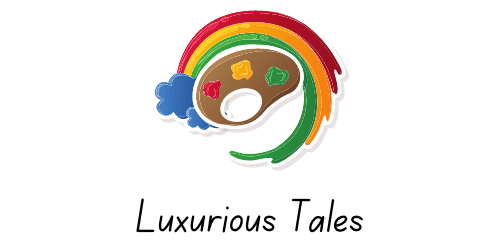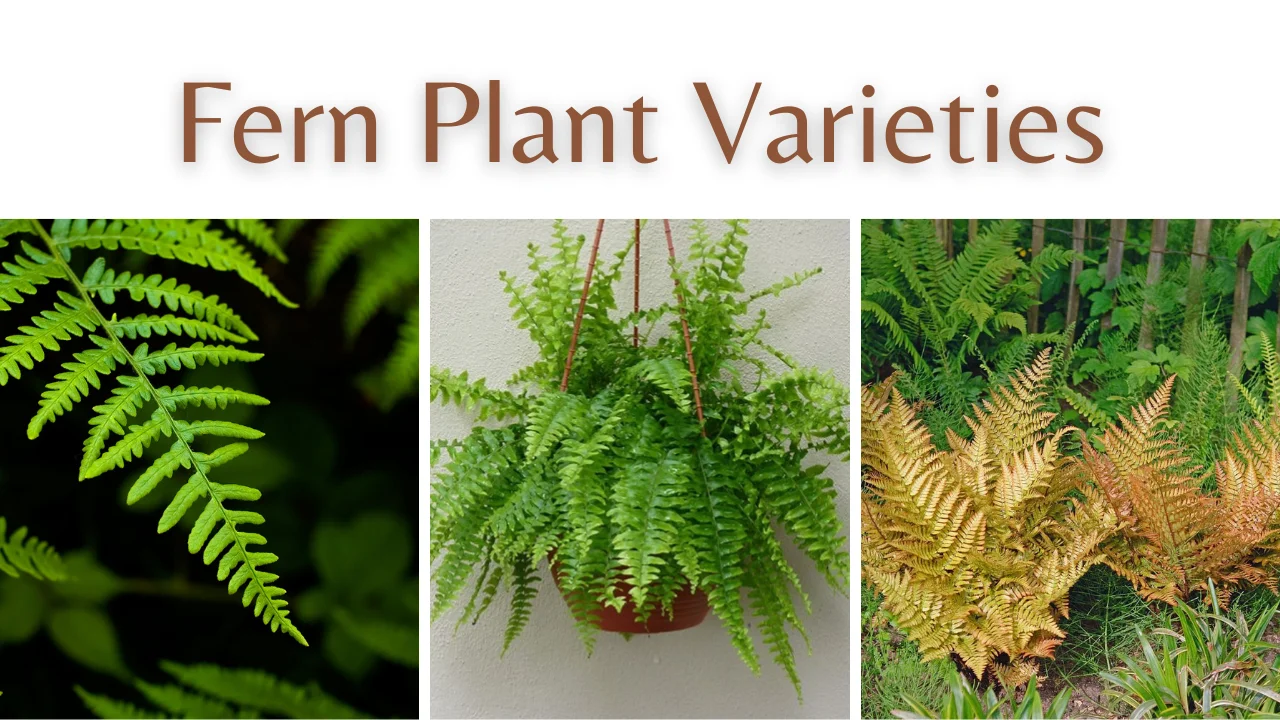Fern plant varieties offer a captivating glimpse into the lush world of botanical diversity. These ancient, non-flowering plants have enchanted botanists and nature enthusiasts for centuries with their unique beauty and resilience.
From delicate, lacy fronds to robust tropical giants, ferns span various forms, sizes, and habitats. We go through their amazing evolutionary history in investigating fern plant variations, from ancient woods to contemporary gardens.
We’ll learn the details of their procreation methods, development patterns, and ecological functions. We’ll find ferns suitable for every habitat as we explore their variety, from the shadowy nooks of woods to the brilliant center of rainforests.
Whether you’re a seasoned gardener seeking the perfect shade-loving fern for your backyard oasis or intrigued by the wonders of the natural world, our journey into fern plant varieties promises to be an enlightening and verdant adventure. Join us as we navigate the enchanting realm of these ancient green wonders.
Top Fern Plant Varieties
Here, You’ll discover some of my favorite ferns, which can flourish in various interior settings. I have provided you with a concise maintenance guide for each so that you may select the best option for your very own personalized living space.
1: Autumn Fern
The Autumn Fern gets its name from its dramatic color change each autumn. In the spring, its fresh fronds appear coppery pink, but they have matured into a dark green by summer.

The fronds become copper and rusty red as fall approaches, bringing warm colors to the environment. This particular fern is well-known for requiring very little care and upkeep from its owners. It does best on soil slightly to completely shaded, rich in organic matter, and slightly to moderately damp.
It can live in arid areas but must be consistently watered for its color to remain vibrant. In the spring, you should prune away dead fronds and leaves that have run their course to encourage new development.
2: Australian Tree Fern
The Australian Tree Fern is a stunning addition to gardens or landscapes. It can reach heights of 30 feet, featuring a tree-like stem and large, textured fronds. This evergreen perennial adds beauty to any space.

It looks ancient and tropical because of its long, arching fronds coated with tiny brownish hairs. Its natural habitat is the moist, shady rainforests of its native Australia.
The Australian Tree Fern is low-maintenance once the proper conditions are met. It does well in a cool, shady location with wet, well-drained soil.
3: Asparagus Fern
The Asparagus Fern, often called the Emerald Fern or Sprengeri, is a beautiful and adaptable plant. Although it looks like a fern, this plant is a relative of the asparagus.
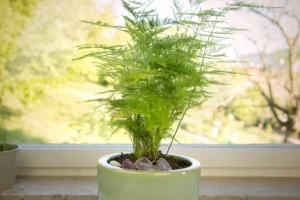
The stems of this plant are arch gracefully, and they are covered with tiny, needle-like leaves. This fern is often planted in gardens and used as a ground cover or to decorate hanging baskets and containers. It originated in South Africa but is currently farmed in many countries.
The Asparagus Fern is a versatile plant that requires little care. It prefers indirect sunlight but may grow in dappled light. Frequent soil moisture can only be maintained via frequent irrigation.
4: Hairy Lip Fern
The Hairy Lip Fern, or Woolly Lip Fern, is a tiny fern with soft, hairy fronds. Because of its origins in arid, rocky environments, it thrives in xeriscape and rock garden settings.

This fern is low-maintenance and simple to care for, although it does best in a controlled environment. It thrives in sunny locations with rocky or sandy soil that drains well.
However, it must be shielded from the noon light to avoid overheating. Use water carefully since it prefers arid climates.
Infamous Lip Fur Ferns are a great addition to rock gardens and xeriscaped landscapes because of their compact size and fine, hairy fronds. Because of its drought tolerance and minimal water needs, it is a great plant for eco-conscious gardeners.
5: Toadstool Fern
The Toadstool Fern is a stunning plant that grows in tropical climates with a rosette-like growth pattern and, as the name implies, new fronds that unroll from the center, giving the plant the appearance of a bird’s nest.

Although it may be grown in soil, this Southeast Asian and Pacific island native prefers to grow as an epiphyte, clinging to trees or rocks.
Surprisingly low-maintenance, this fern thrives in either strong indirect sunlight or moderate shade and requires little to no watering. It does best when grown in soil kept damp at all times and appreciates potting soil that is porous and allows excess water to drain away.
To simulate the high humidity seen in its native environment, mist the fronds on occasion. The Bird’s Nest Fern is a fascinating addition to any indoor or shaded outdoor location due to its unusual growth pattern and beautiful green fronds.
6: Boston Fern
The Boston fern is one of the most well-liked houseplants of all time. Its lacy look and arching fronds provide a sophisticated air to any space.

Its natural habitat is the tropics; therefore, it does best in warm, humid conditions, whether inside or out. Even though it calls for a little more care than most other varieties of ferns, the Boston fern is still quite simple to tend to. It thrives in areas that have a high amount of humidity and strong light that is indirect.
Soil must be watered regularly to prevent drying out, but too much water might cause root rot. The fronds may be misted, or the plant can be placed on a humidity tray to help keep it damp.
7: Cinnamon Fern
The fertile fronds of the Cinnamon Fern, a deciduous fern, are distinctive and visually appealing because they resemble cinnamon sticks. Its natural habitats include marsh areas, swamps, and forested regions in North America. Its growth form resembles a vase.
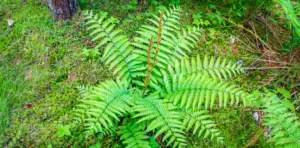
This fern thrives on acidic, regularly damp soil that drains well. It is a great plant for forest gardens or regions with filtered light since it does well in environments with varying degrees of shade, from partial to full.
It can survive in dry conditions, but consistent watering throughout the growing season is essential for optimal development.
When the Cinnamon Fern begins to sprout its fruitful fronds in the spring, it adds a mystery to the garden. Its tolerance for damp, gloomy circumstances makes it a useful addition to rain gardens and similar settings.
8: Foxtail Fern
The Foxtail Fern, often called the Asparagus Fern or the Myers Fern, is a kind of fern that stands out for its unusual, bushy look. It is not a fern but a member of the Asparagus family and native to South Africa.

This fern requires little care since it thrives in full sun or moderate shade. Once established, it may survive in dry conditions despite its need for soil with good drainage. Watering regularly throughout the growing season will result in luxuriant vegetation.
The Foxtail Fern is easily distinguished from other ferns by its rich and fluffy look, which resembles a fox’s tail. Gardeners who want to give their areas a special touch often choose this plant because of its adaptability to indoor and outdoor situations and ability to flourish in pots.
9: Hart’s Tongue Fern
Long, strap-like fronds give the Hart’s Tongue Fern its characteristic look, giving the plant an air of sophistication. Its native range includes most of Europe, where it is often found on shady, rocky outcrops of limestone. The brilliant green leaves cluster neatly, and the undersides are ribbed with brown spores.
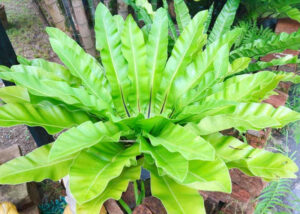
This fern thrives in wet, shaded environments and is simple to care for. A well-drained, slightly alkaline soil is preferable, although it may survive in various conditions. Maintaining its health requires consistent watering, even more so during dry periods.
Because of its unusual fronds and low care requirements, the Hart’s Tongue Fern is a popular plant for forest and shadow gardens. It is evergreen, so it looks good all year round, and it can thrive in a wide range of lighting conditions, expanding your landscaping possibilities.
10: Christmas Fern
The Christmas fern is a hardy fern with evergreen leaves and maintains its lush appearance throughout the year.
The unusual appearance of its glossy, leathery fronds, which resemble a Christmas stocking or boot, is likely where the plant got its name.
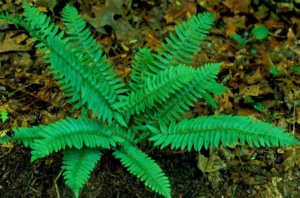
It is found naturally in the woodland regions and along the rocky slopes of the continent of North America. This fern requires a moderate amount of care and may thrive in various lighting situations, from complete obscurity to patches of bright sunshine.
It thrives best on acidic soil, has good drainage, and should be watered often, particularly during periods of drought. The use of mulch may assist in retaining moisture and inhibit the development of weeds.
